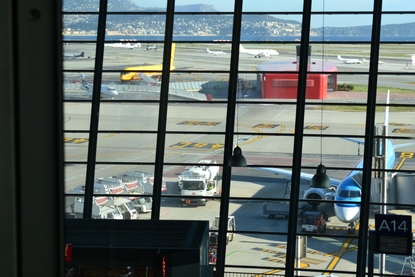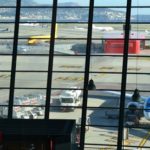The second airport in France is set to transform during the period 2012-2016. This Monday, Bernard Kleynhoff, Chairman of the Supervisory Board of the Airports of the Côte d’Azur company, and Hervé de Place, Chairman of the Management Board, presented their strategic plan for the next 5 years.
Nearly 10.4 million passengers passed through Nice Côte d’Azur Airport in 2011. This is a record for the Côte d’Azur platform, which is aiming even higher for 2012. Necessary infrastructure must be created to accommodate such an influx of travelers. It is with this goal in mind that the Airports of the Côte d’Azur company held a conference this Monday to present the strategic plan for the period 2012-2016. Here’s a preview of what the site will look like in 5 years:
Emergence of low-cost airlines.
Low-cost flights (averaging 50 euros) are set to become the dominant model for short and medium-haul travel in Europe. From 40% of the current market, it is expected to increase to 50%. Some traditional airlines have started to adapt, such as Air France, which has already established a base in Nice. Consequently, the airport plans to build a new terminal by 2020 and dedicate it to low-cost flights, a project estimated at 82 million euros. The turnaround times between flights should also be reduced to 25 minutes, the standard imposed by the airlines.
Improving accessibility.
One of the future termini of tram line 2 is set to connect to terminal 2 of the airport. The platform plans to allocate 12 million euros to facilitate the integration of tracks on the site. Initial construction work is expected to begin in 2014. Meanwhile, the construction of an additional P5 car park with 2,600 spaces is planned for 2017.
Commercial revenues.
The commercial zone of Nice Côte d’Azur Airport is set to be completely redesigned, particularly the layout and optimization of shops. New management methods, based on joint ventures, are also expected to be implemented with commercial operators. As a result, fees will increase by 30% between 2012 and 2016.
Fuel self-sufficiency.
A future fuel depot is planned to be built. Located in the southern area of the airport, this project will provide a storage capacity of 5,400 m³, compared to the current 1,500 m³.
Optimizing financial performance.
For the 2012-2016 period, the goal is to achieve a ROCE (return on capital employed) greater than 7%. The strategic plan presented expects to increase from 5.1% in 2012 to 7.1% in 2016.



